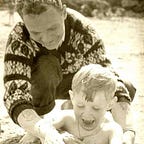How might we design a better voyage experience for our remote students?
Taking our students on voyages is a big part of the learning experience we design for our students in our Teachers College, Columbia class that I teach with Reshan Richards. With voyages, we are taking our students out of their normal learning environment and moving them into another zone. When they move to that zone, they are much more prone to absorb new “stuff” and see different points of view (POV), their observation skills are also improved, and they are inspired. Inspiration, Observation, and POVs are important attributes for an Innovator, and we intentionally do this in our class. When the pandemic arrived, we redesigned it, nothing too exciting; we just had speakers show up in our synchronous online environment. Along with getting a different point of view from ours, we brought new expertise to the class, which challenged the students. I am happy that our voyages returned this semester. This semester we set up four off-campus experiences to:
However, almost 50% of our students remained remote, and some remained in their home countries, which meant they were dealing with a significant time difference. This posed a challenge for Reshan (co-professor) and me. For the Steelcase, voyage students went in groups around the showroom, and we asked one of the students per group to bring the remote students in via zoom or any communication tool of their choice so they could observe and hear what was happening in class. This worked well, but of course, the remote experience of a voyage is not the same as an in-person experience.
For both the Dwight and BrinPop voyages, Reshan or I logged on at the front of the room and projected on a screen, this worked well for the first part of the voyage listening to experts on what they do day-to-day in a lab like this and also showcasing student work. However, for the second part of the voyage, when students were touring the lab, Reshan logged into his laptop and moved around the lab so the remote students could see the lab equipment. We did the exact same thing at the Portfolio School.
We started to think about a redesigned voyage for the remote students since we don’t know if, for future classes, all of our students will be physically with us in the classroom. What if we continue to have remote students? What if we continue to have a hybrid student audience? So what we did was to challenge our students in their final projects to respond to this prompt:
” How might we design a better voyage experience for our remote students?”
Students worked in groups to develop prototypes in the form of a short film.
Take a look at the results here.
There are six prototypes in total; the comments you see surrounding the short films are the comments the students left for their classmates in the form of feedback. Take a look at the final projects, I’d love to have your feedback on them.
